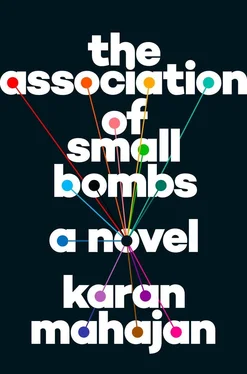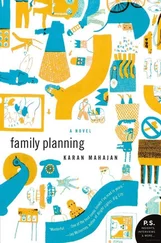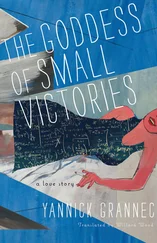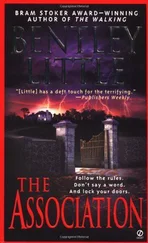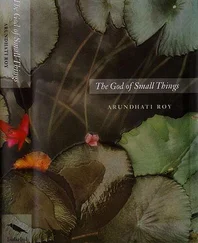The book said straightforward things. Pain was a response to injury. But when pain didn’t go away it was because a deep-seated psychological pattern had been established; besides, back pain hadn’t existed till fifty years before — before that, people got ulcers when they were depressed; where were ulcers now? Replaced by back pain. Mansoor skipped pages, his wrists singing with pain, his chin sunk into his neck, the back of his neck stiff. He was a mannequin of pain, controlled by it; he altered his posture every few seconds and kept the bloated tuber of the hot-water bottle pressed to his lumbar.
Then Mansoor got to the part where the author proposed a solution.
The solutions seemed laughably simple. One, the author wrote, exercise frequently but don’t focus unduly, in your exercises, on the troubled part of the body; and two, visualize at night the body part that suffers from pain and imagine it getting better.
In normal circumstances, Mansoor would have shrugged these off, but he was so down and out that he decided to give them a try.
________
Miraculously, as the weeks wore on, he began to get better. Establishing a routine of Iyengar yoga poses, swimming a few turgid laps in the covered Gymkhana pool, and skidding forward on the treadmill in the gym, he felt his pain beginning to dissipate, clear out, the way a clogged sinus might suddenly give up the ghost of its liquid. The months and years of struggle were suddenly canceled by three weeks of exercise and some visualization and focus.
(Later, when it was all over, when his life was coming to an end, he would think that he had probably started to recover because months of therapy had paid off; that he had been misdiagnosed during the nerve test; and that his recovery had been an act of faith and belief, the sort that can only take hold of a person when he is at his lowest.
But then, in the middle of this storm of circumstances, with his father’s fortune disappearing and the family in decline and his future uncertain and curtailed and the bomb still sitting vastly on the horizon of his past, like a furious private sun, always pulling him toward it — in the middle of this, this experiment with visualization, with accepting there might be other reasons for pain beside injury, had seemed like a paradigm shift.)
“Mine, when I started it, was gone in three months,” Ayub said one day, in the room at the back of Holy Child Nursing Home. The two men had become friendly again when Mansoor had told him his advice had helped; they had arrived early, before the others, and were sitting on the floor and talking. Ayub was wearing a white kurta with Kolhapuri slippers. He clutched one foot with his hands. He had enormous toes with bright symmetrical toenails. “I too was skeptical when I was first told about this idea. We’re slaves of science. We can’t believe there can be an answer outside doctors. We believe whatever they tell us — you have microtears in your wrists, is it? Well, there might be an easier explanation for why you don’t see them! I don’t mean to be too philosophical here, but we’re brought up within that system and are incapable of seeing what may be wrong with it. You’ve read Gandhi-ji? He said that the two worst classes of human beings were doctors and lawyers. Lawyers because they prolong fights and doctors because they cure the symptoms, not the cause. Doctors don’t eliminate disease — they perpetuate the existence of doctors. This is all there, in Hind Swaraj . But our own problem is — and I’m talking about all of us — we swallow everything Western civilization gives us. We reject even the best parts of our own culture. All these things we now call faith healing — what were they? Just forms of this, visualization, holistic techniques. But modern men like you and me wouldn’t be caught doing this so-called jhaad-phoonk. That’s something our servants do. But our servants aren’t idiots. This is a country of servants. And these people are living, right? Healthier than you would expect given the water they drink, the food they eat, the air they breathe. How?”
It was a mistake to tell him, Mansoor thought. He’s getting all excited. “The tough thing for you,” Ayub said, “will be what to do when the pain starts moving around.”
“Yes, the book told me about that.”
“Your body’s not going to give up on pain so easily. It’s been living with it for six years. And it’s been validated by the doctor. The doctor who is like a priest marrying you to your pain. Anyway, what will be interesting is not even what you’ll do when the pain moves around — you’ll handle it if you can handle this — but what you’ll do when it finally disappears.”
________
Mansoor felt close to Ayub. His wisdom wasn’t just for show; he wasn’t a quack — in fact, he was the only person to have truly helped Mansoor since the blast. Mansoor despaired about the years he’d lost to pain, and wished he’d healed faster. “Don’t regret things. Look at the present, and pray,” Ayub said. “That’s why I started praying. If you look backwards or forward, you stumble. But prayer keeps you focused on the eternal present.”
They started going to the mosque together again, several days a week this time, Mansoor driving over in his car, no longer ashamed of his new religiosity. In the mosque he wore a skullcap and tried to be near the front and was fervent in his devotion.
He used his time praying to do what prayer must have been meant for in the first place, before it became ritual: visualization. Pressing his fingers behind his ears, he’d see himself playing cricket one winter day with Tushar and Nakul, smashing the ball. He could picture, in that hothouse of intoning bodies, the leaves on the trees, crisp and crumbling, above and beneath his feet, crunching; a discarded cricket glove, white and dirty and stiff around the thumbs, lying on the dusty earth; Nakul’s flexible, rubbery body curled over to bat, the bat kicking impatiently at the crease, looking sometimes like the leg of a tied horse and other times like the stuck tine of a clock — those were the happiest days of his life.
In visualization — used by athletes as well as the injured — you were first supposed to conjure and concentrate on a moment of surpassing happiness, a scene to which you could bring scents, sounds, colors. When Mansoor had started at home, he’d been surprised by how few happy moments he could pull out from the quiver of his memory. Had he never been happy? Then, one day, at the mosque, he’d hit upon this image of Tushar and Nakul and him and the other colony boys playing cricket and he’d been floored by the details, and kneeling on the ground in the mosque, the fabric of hundreds of worshippers crinkling and rustling around him, he had been overwhelmed. How long he’d suppressed that image! That image of life before the bomb, when one’s main concern was how not to be accidentally neutered by the hard cricket ball and how to avoid being brained when the ball spiraled down toward you from the air and you stood underneath with your small, smooth, rich-boy palms to catch it. Sometimes he got so lost in the memory that he forgot the most important part of the visualization exercise: picturing oneself doing the task one feared, in his case typing. Sometimes he just roamed the placid heat-struck diorama of the cricket field of his memory, interacting with Tushar — excitable, nervous Tushar — who loved Mansoor for unknown reasons, and sly Nakul with his excessively opposable thumbs, a boy who, like so many athletes, seemed happy to be led, thought of himself as a highly respected grunt capable of performing only one specialized task (speed bowling).
How strange to have these thoughts in the mosque, in that place where no experience was supposed to be private, where each person was consumed by the same God, the same words… though of course that wasn’t true: for most people, as Mansoor had noticed, going to the mosque was rote, like changing the oil in the scooter, or paying the school fees, another task to be checked off the list. Sometimes, coming up after the twelve minutes of prayer, he felt he was the only person who’d had an ecstatic experience with God on the clammy floor.
Читать дальше
